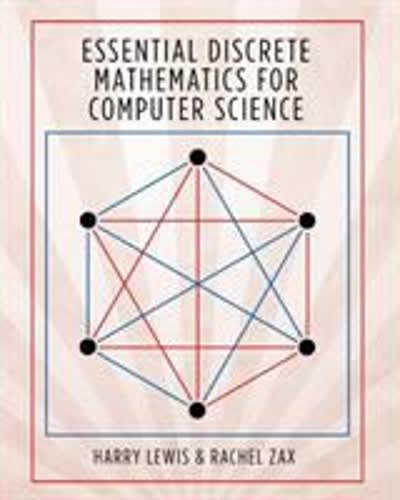Question
In a clinical study, 3400 healthy subjects aged 18-49 were vaccinated with a vaccine against a seasonal illness. Over a period of roughly 28 weeks,
In a clinical study, 3400 healthy subjects aged 18-49 were vaccinated with a vaccine against a seasonal illness. Over a period of roughly 28 weeks, 24 of these subjects developed the illness. Complete parts a through e below.
a. Find the point estimate of the population proportion that were vaccinated with the vaccine but still developed the illness. The point estimate is nothing. (Round to five decimal places as needed.)
b. Find the standard error of this estimate. The standard error of this estimate is nothing. (Round to five decimal places as needed.)
c. Find the margin of error for a 95% confidence interval. The margin of error is nothing. (Round to five decimal places as needed.)
d. Construct the 95% confidence interval for the population proportion. Interpret the interval. The 95% confidence interval for the population proportion is (__,__). (Round to five decimal places as needed.)
Interpret the interval. Choose the correct answer below.
A. With 95% confidence, the limits of the confidence interval contain the proportion of healthy people aged 18-49 who are vaccinated with the vaccine but still develop the illness.
B. The proportion of all people who are vaccinated with the vaccine but still develop the illness falls within the limits of the confidence interval 95% of the time.
C. With 95% confidence, the limits of the confidence interval contain the proportion of healthy people aged 18-49 who are vaccinated with the vaccine who do not develop the illness.
D. The proportion of healthy people aged 18-49 who are vaccinated with the vaccine but still develop the illness falls within the limits of the confidence interval 95% of the time.
e. Is it safe to conclude that fewer than 1% of all the people aged 18-49 vaccinated with the vaccine will develop the illness? Explain by using the results from part d.
A. No, it should not be concluded, since the lower limit of the confidence interval is greater than 0.01.
B. Yes, it can be concluded, since the lower limit of the confidence interval is less than 0.01.
C. No, it should not be concluded, since the upper limit of the confidence interval is greater than 0.01.
D. Yes, it can be concluded, since the upper limit of the confidence interval is less than 0.01.
Step by Step Solution
There are 3 Steps involved in it
Step: 1

Get Instant Access to Expert-Tailored Solutions
See step-by-step solutions with expert insights and AI powered tools for academic success
Step: 2

Step: 3

Ace Your Homework with AI
Get the answers you need in no time with our AI-driven, step-by-step assistance
Get Started


